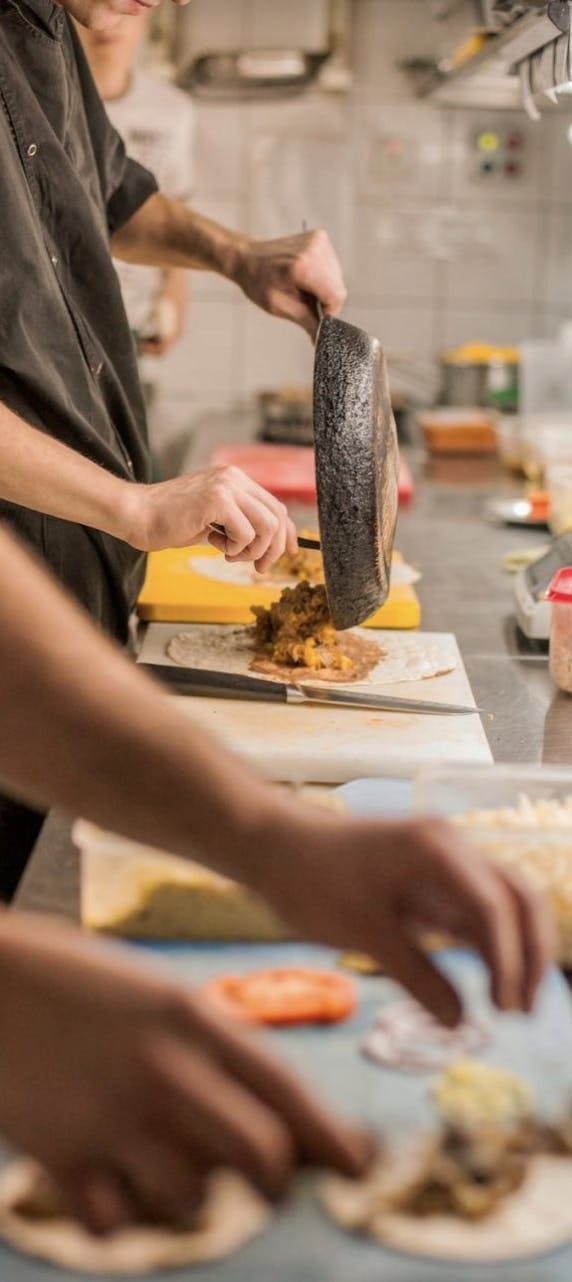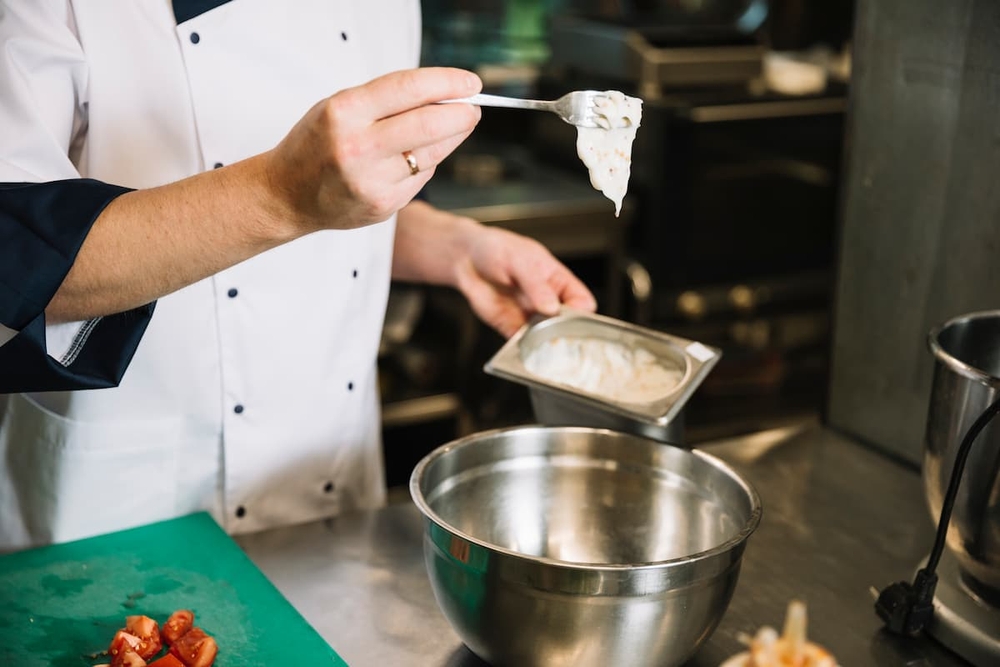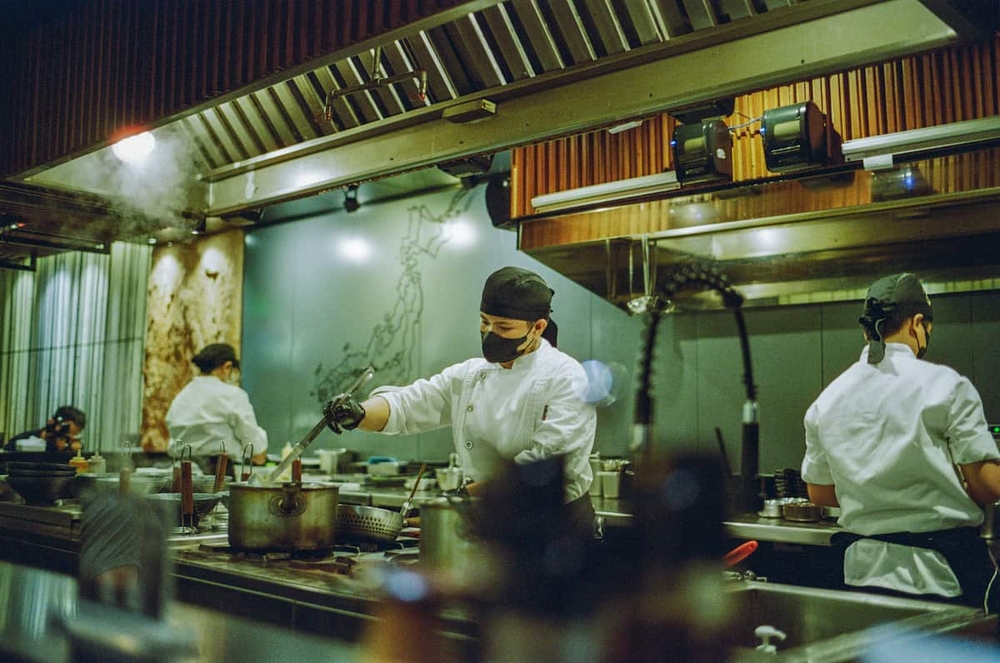How to streamline operations and scale with strategies to handle high volume catering orders
Table of Contents
CloudKitchens
How many tacos can be delivered from a 1000sqft restaurant?
The same amount as a 200sqft ghost kitchen.
Handling high volume catering orders can be both a lucrative opportunity and a significant operational challenge. Whether you’re serving corporate events, weddings, large parties, or high-traffic food delivery orders, managing the scale requires more than just good recipes, it demands precise logistics, operational efficiency, and a robust team. Without the right systems in place, your business could face late deliveries, quality issues, and dissatisfied clients.
From kitchen workflows to staffing and technology, you’ll learn how to scale your catering operations while maintaining consistency and profitability.
What is volume catering?
Volume catering refers to the preparation and delivery of food for large groups of people, typically ranging from dozens to thousands. This form of catering is common in corporate functions, weddings, large-scale festivals, meal prep services, and institutional events. It differs from traditional restaurant service in its need for mass production, packaging, transportation, and strict timing coordination.
Key characteristics of volume catering include:
- Bulk menu planning with limited customization;
- Advanced ordering and forecasting;
- Batch cooking and standardized recipes;
- Heavy reliance on logistics and operations management.
Read more: Ensure your catering business thrives: A guide to essential insurance for catering
What type of catering is most profitable?
While different models can be profitable, high-volume corporate catering and recurring meal delivery contracts are often the most lucrative. According to Lunchbox.io, catering accounts for up to 18% of restaurant revenue on average and can have 5–10% higher margins compared to regular dine-in services due to predictable order sizes and repeat business.
High-volume catering also allows for better cost control and efficiency in ingredient sourcing, labor planning, and kitchen workflows. Unlike à la carte dining, catering allows you to forecast orders ahead of time, reducing food waste and maximizing output per labor hour.
Read more: Top 7 profitable catering food ideas to elevate your business to the next level!
Challenges of volume catering
Scaling up your catering operations comes with unique hurdles. These include:
- Logistical complexity: Coordinating multiple orders across different locations with strict delivery windows
- Staffing issues: Ensuring enough trained personnel are available, especially for short lead times
- Quality control: Maintaining consistency across large batches
- Communication breakdowns: Miscommunication between sales, kitchen, and delivery teams
- Inventory shortages: Running out of critical ingredients can derail production
Below, we break down the most effective strategies to overcome these challenges and grow your catering business successfully.
Read more: How to grow & improve your catering sales
Top strategies to handle high volume catering orders
1. Standardize your menu and processes
Offering a limited, streamlined catering menu helps simplify prep, reduce errors, and optimize inventory management. Focus on dishes that travel well, are cost-effective, and easy to prepare in bulk. Standardize recipes with exact weights, cooking times, and packaging instructions to maintain quality and consistency across orders.
Tools like digital recipe managers can help centralize and update your menus in real time.
2. Implement production planning systems
Create a catering production schedule based on order volume, prep time, and kitchen capacity. Use tools like spreadsheets or catering-specific software to visualize workflows and prioritize tasks.
Altametrics recommends using batch production scheduling to optimize kitchen throughput and labor allocation. This includes:
- Prep timelines for sauces, proteins, and sides;
- Cooking schedules based on event start times;
- Packing and staging deadlines;
- Delivery route planning.
3. Leverage kitchen zones and prep stations
Designate specific stations for hot food, cold prep, packing, and delivery staging. Divide the workflow by function (salad assembly, sandwich wrapping, dessert boxing) to reduce cross-traffic and improve speed.
4. Use technology for order management
Digitizing your order flow is essential for managing large volumes. Use a catering management platform or POS system that integrates with your website and CRM. These systems:
- Track incoming orders in real time;
- Provide production summaries by time or event;
- Sync with kitchen display systems (KDS);
- Generate automated packing slips and delivery instructions.
Read more: Restaurant Technology: Boost your business with the best technology trends
5. Train a specialized catering team
Create a dedicated team for large orders, including prep cooks, packers, and delivery coordinators. Provide focused training on bulk prep, sanitation, packaging standards, and client service expectations.
Cross-train team members to be flexible during rush periods and encourage a culture of accountability. Having a well-prepared staff is key to maintaining service quality when demand surges.
Read more: The secret to a strong kitchen staff for catering businesses
6. Build strong vendor and delivery relationships
High-volume catering depends heavily on dependable suppliers and logistics providers. Establish backup vendors for key ingredients and maintain regular communication with delivery platforms or in-house drivers.
Ensure that delivery teams understand your packaging standards, customer service tone, and order handling practices. Tools like Route4Me or Onfleet can help optimize multi-stop delivery routes.
7. Forecast demand with data
Use historical data and sales analytics to forecast busy periods and staffing needs. Identify seasonal trends, repeat clients, and recurring events to plan your resources proactively.
According to Restroworks, data-driven forecasting can help reduce last-minute scrambling and improve profitability through better resource allocation.
8. Prioritize packaging and labeling
Invest in high-quality, eco-friendly packaging that preserves food temperature and presentation. Label each item clearly with dietary information, allergens, or heating instructions.
A consistent packaging system not only ensures accurate delivery but also enhances your brand’s professionalism.
Read more: The power of unique food packaging in customer experience
9. Communicate clearly with clients
Send detailed confirmations outlining order specs, delivery timing, and payment terms. Follow up 24-48 hours before the event to reconfirm details and allow time for last-minute changes.
Clear communication builds trust and prevents misaligned expectations, especially when dealing with large-scale or corporate orders.
10. Establish a feedback loop
After each catering event, collect feedback from clients to identify areas for improvement. Use surveys, follow-up emails, or CRM software to document client preferences and service performance.
Over time, these insights can help you refine your menu, streamline your operations, and retain more clients.
How to increase catering orders
Scaling your catering business is not just about handling more orders, it’s also about generating them. Here are several ways to grow your catering volume:
- Build corporate partnerships with offices and co-working spaces;
- Offer subscription-based meal plans for schools, gyms, or events;
- Promote limited-time packages for holidays or large gatherings;
- Use social proof and client testimonials in your marketing;
- List your business on event and corporate catering marketplaces.
Read more: Mastering restaurant management: how to increase profitability and streamline operations
Connect with CloudKitchens and grow your catering business
If you’re looking to grow your catering business without the overhead of a full-service restaurant, CloudKitchens offers turnkey ghost kitchen solutions designed for scale. With fully equipped commercial kitchen spaces, delivery-focused infrastructure, and access to multiple delivery platforms, you can streamline operations and boost your capacity for high-volume catering.
Our spaces allow you to:
- Expand into new markets with minimal upfront investment;
- Optimize order fulfillment through integrated technology;
- Handle peak demand efficiently with strategic kitchen layouts;
- Launch and scale catering concepts with low operational friction.
Ready to take your catering business to the next level? Explore CloudKitchens’ ghost kitchen solutions to scale high-volume catering operations with ease and efficiency.
DISCLAIMER: This information is provided for general informational purposes only and the content does not constitute an endorsement. CloudKitchens does not warrant the accuracy or completeness of any information, text, images/graphics, links, or other content contained within the blog content. We recommend that you consult with financial, legal, and business professionals for advice specific to your situation.
More insights & stories
There’s more where that came from.
Get in the know and check out our additional insights


